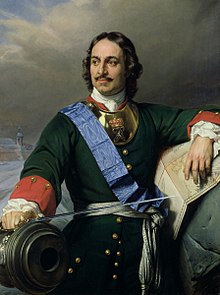User:LittleRoughRhinestone/russianhistoryassignment

Government reform under Peter I refers to modifications made to the state apparatus of Russia during the rule of Peter I.
Peter ascended to the throne in 1682; he ruled jointly with his half-brother Ivan V until his death in 1696. After this, Peter implemented a series of sweeping reforms aimed at modernizing Russia, modeled on Enlightenment ideals and influenced by advisers from Western Europe. At first, these reforms were intended to fund the Great Northern War; later reforms were more systematic and would significantly change the internal construction and administration of the state.
Background
The majority of Peter's reign was dominated by the Great Northern War (1700-1721), during which Russia, along with a host of allies, seized control of the Baltic Sea from Sweden and gained considerable influence in Central and Eastern Europe. The war, one of history's costliest at the time, consumed significant financial and economic resources, and the administrative system Peter had inherited from his predecessors was inefficient at gathering and managing resources for the war.
Provincial reform
Table of Ranks
The church
Compared to his predecessors, Peter's rule was marked by a larger degree of religious freedom. Non-Orthodox Christians and Muslims were permitted to practice and proselytize their faith, provided they paid an extra tax and not challenge the supremacy of the Orthodox Church.
